A guide to visiting Wat Phra Kaew
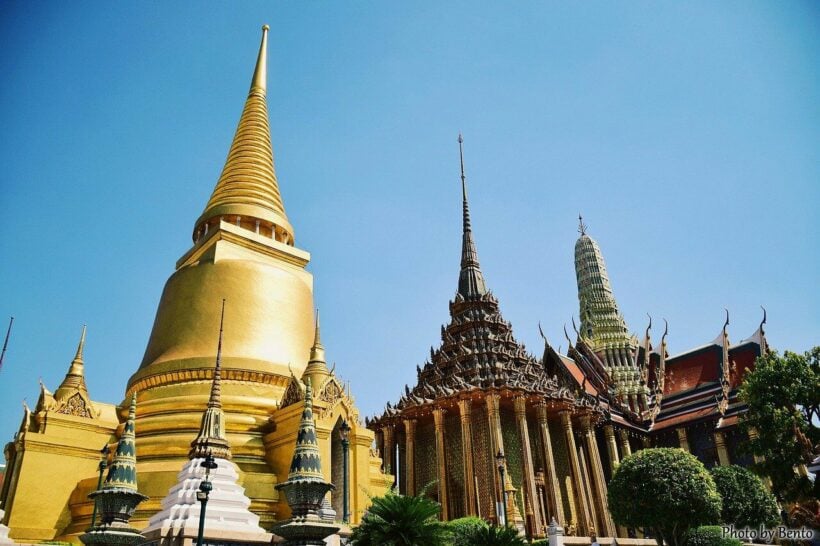
When talking about beautiful temples in Thailand, it’s almost impossible not to mention Wat Phra Kaew. Also known as the Temple of the Emerald Buddha, Wat Phra Kaew is one of Thailand’s most sacred and famous Buddhist temples. Located within the Grand Palace in the heart of Bangkok, it’s possibly one of the easiest temples to visit in the country.
From a brief history to the dress code, we’ve compiled everything you need to know about visiting Wat Phra Kaew below.
A quick history of Wat Phra Kaew
The Temple of the Emerald Buddha was constructed in 1785 when King Buddha Yodfa Chulaloke (King Rama I) moved the capital of Thailand from Thonburi to Bangkok. Unlike most temples in Thailand, Wat Phra Kaew doesn’t have any living quarters for monks. Instead, it’s filled with sacred buildings and objects. You can find elaborate paintings, carvings, and pagodas throughout the whole temple.
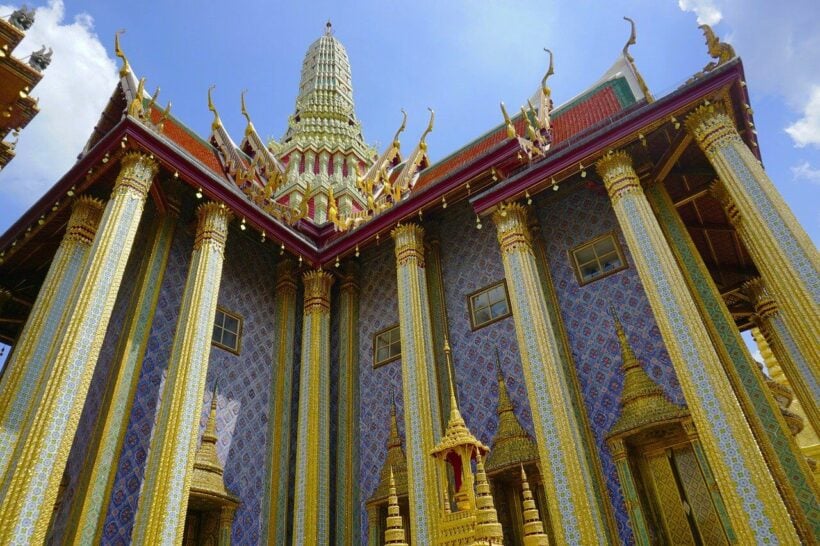
What to see in Wat Phra Kaew
Wat Phra Kaew is a beautiful complex with ornate buildings. Considered one of Bangkok’s largest temples, you can find Buddhist statues, towers, and temples here. However, the highlights of the temple are as follows:
The Emerald Buddha
The main attraction of Wat Phra Kaew is, of course, the Emerald Buddha. It’s located in the temple’s main hall, otherwise known as Ubosot or ordination hall. Don’t expect to see a giant Buddha statue because the Emerald Buddha is actually pretty small in size. The statue, depicting the Buddha sitting in a meditating position, is only 66 cm tall. Despite the size, however, it’s one of the most sacred objects in Thai culture.
Also known as Phra Kaew Morakot, the statue isn’t actually made from emerald. It was carved from a single block of jade and is decorated with jewel-embedded garments made from pure gold. Only the King of Thailand can touch the sacred statue. Three times a year, the King changes the golden garment in a formal ritual with the help of an assistant. The garments correspond to the three seasons of Thailand: hot, cool, and rainy.
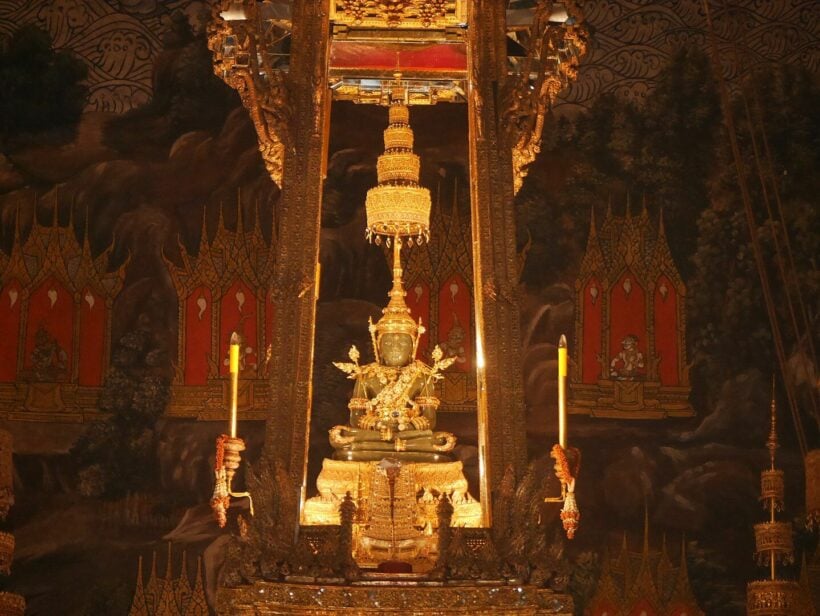
The Model of Angkor Wat
Along with the Emerald Buddha, the Model of Angkor Wat is also a must-see when visiting Wat Phra Kaew. Angkor Wat is an ancient temple complex in Cambodia, and the detailed scale model was built under the order of King Rama IV. Legend has it that King Rama IV wanted to move the temple complex from Cambodia to Bangkok. However, since it wasn’t feasible, he ordered the construction of a detailed model of Angkor Wat instead.
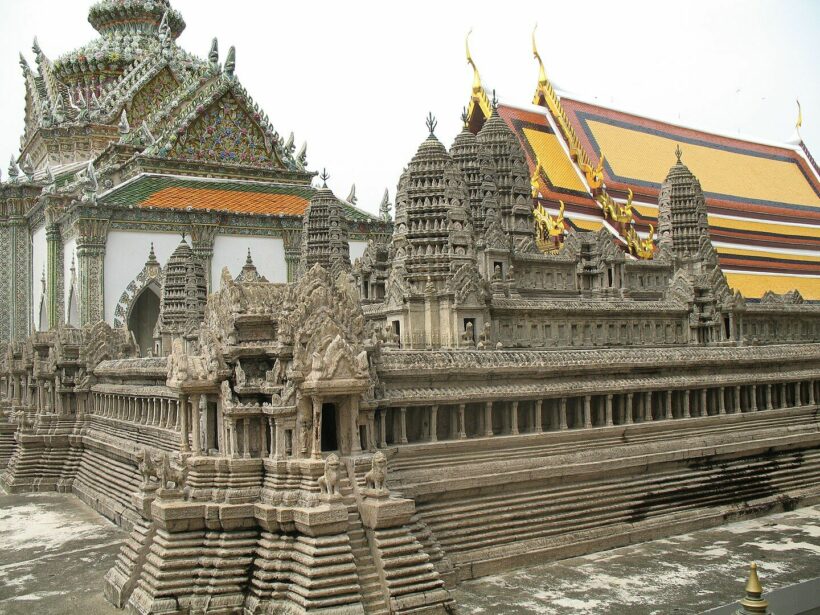
Ramakian Murals
Starting from the north gate and continuing clockwise around the compound, you can find 178 murals depicting the Ramakian story. It includes the depictions of Rama (the hero), Sita (his bride), and Hanuman (the monkey king).
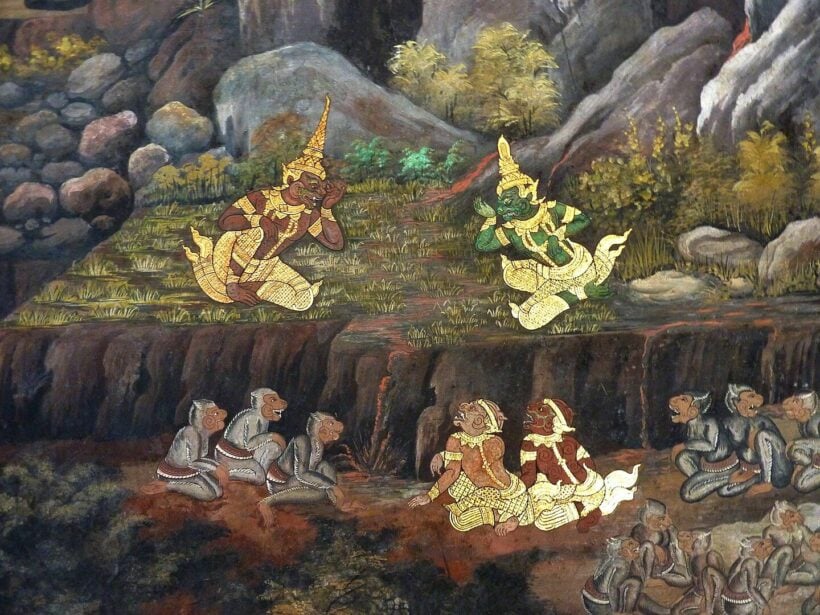
How to get to Wat Phra Kaew
Wat Phra Kaew is situated on the premises of the Grand Palace in Bangkok Old Town. One of the most inexpensive and unique ways to reach the temple is by taking river taxis. You can take a boat at the Chang Pier and travel across the Chao Phraya River to get to the temple.
You can also get a regular taxi to get to Wat Phra Kaew. However, be aware that some drivers will try to overcharge you and even try to scam you by saying that the Grand Palace is closed for the day. If you don’t want to take a taxi, Grab bike or car can also be an ideal option.
Entrance fee and opening hours of Wat Phra Kaew
Unless an important ceremony is being held, the temple is open to the public from 8.30 am to 3.30 pm every day.
There’s a 500 Baht entrance fee to the Grand Palace, which gives you access to attractions inside the palace. These include Wat Phra Kaew, The Royal Thai Decorations and Coins Pavillion, and The Queen Sirikit Museum of Textiles. The ticket also allows you to access the Vimanmek Palace Museum for free.
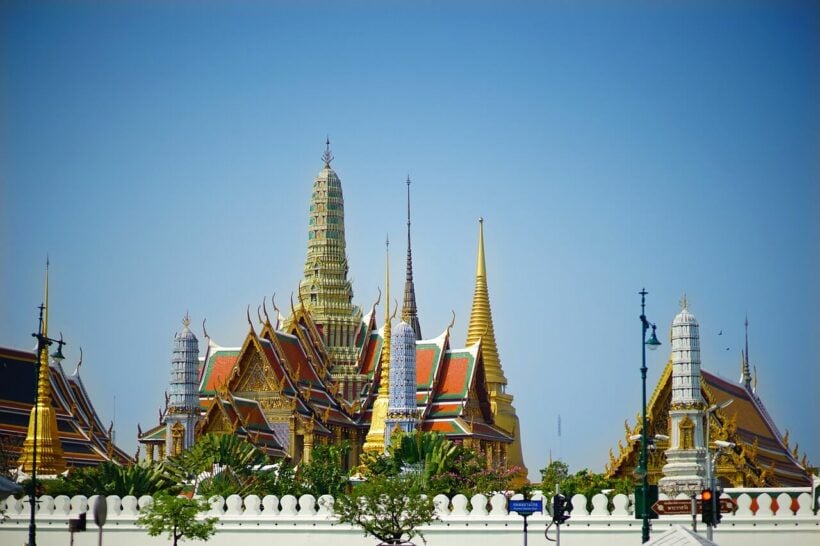
Dress code for visiting Wat Phra Kaew
It’s essential to keep in mind that the Wat Phra Kaew is a sacred temple. Therefore, there are strict dress rules that you must follow. Here’s a general guideline for dressing when visiting the temple:
– Knees and shoulders should always be covered.
– No tight or transparent clothing.
– Avoid yoga pants, stretch pants, and sleeveless tops.
– Clothing depicting religious themes and death-related themes is not allowed.
– Torn-style clothing is not permitted.
– If you have any Buddhist or Hindu tattoos, be sure to cover them.
You won’t be allowed to enter the temple (and the Grand Palace) if you don’t adhere to the dress code guidelines. However, you can rent appropriate clothing at the entrance if you forget to wear proper clothes.
Other things to keep in mind when visiting Wat Phra Kaew
Since Wat Phra Kaew is a sacred place, you need to follow specific rules and etiquette.
– Always speak quietly. Avoid laughing or yelling inside the temple. You shouldn’t run around on the temple grounds as well.
– Be respectful. Try not to get in the way of people who may visit the temple to actually worship.
– Don’t chew gum, eat snacks, or smoke cigarettes inside the temple.
– Don’t wear accessories like hats, sunglasses, or headphones while you’re exploring the temples. In addition, you will be required when enter Wat Phra Kaew.
– Avoid turning your back to, pointing at, and touching images of Buddha.
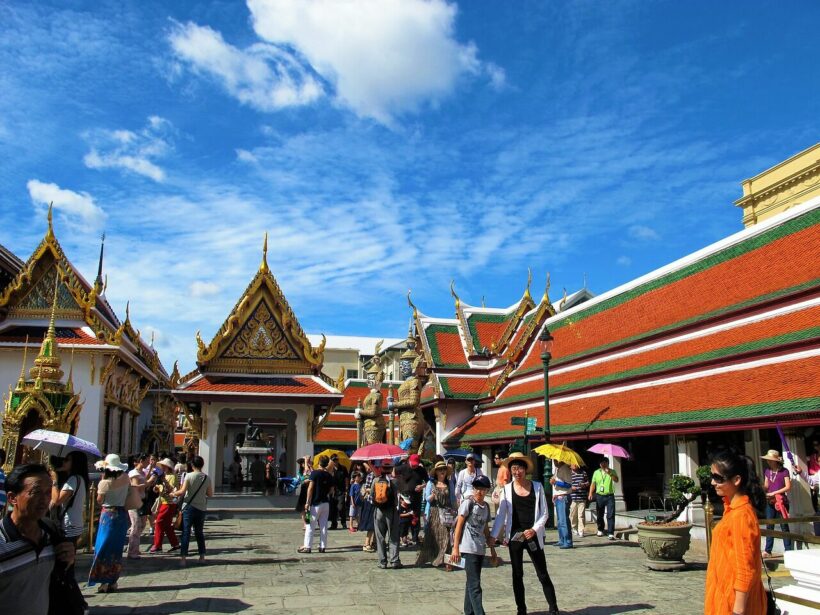
For more temples to visit in Thailand, check our article on the top 5 temples to visit in Thailand and top 5 temples in Bangkok.
Latest Thailand News
Follow The Thaiger on Google News:


























